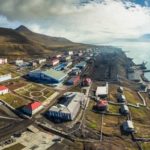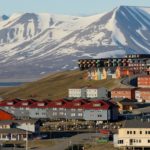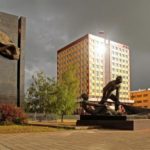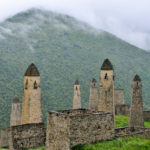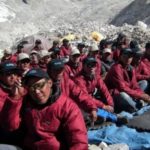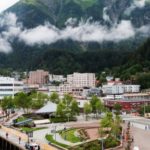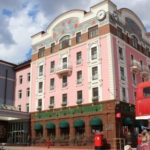Village Pyramid, Svalbard
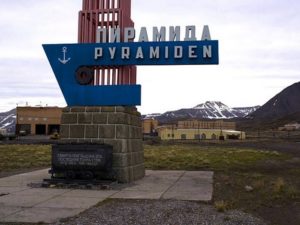 The village of Pyramid, now rarely anyone can be interested in hearing such a name, there are few villages in Russia. A quarter of a century ago, many people knew about this village on the Spitsbergen archipelago, especially among miners.
The village of Pyramid, now rarely anyone can be interested in hearing such a name, there are few villages in Russia. A quarter of a century ago, many people knew about this village on the Spitsbergen archipelago, especially among miners.
The stories of eyewitnesses who visited the village of Pyramid, on the distant Norwegian Svalbard, most of our people perceived as a fairy tale, invented to lure miners. They say that there ordinary people live as if under communism, on everything prepared, they get salaries as ministers.
The pyramid was a pipe dream of Soviet miners who were not afraid of hard and dangerous work underground, receiving decent money for that time. The work of miners has always been based on endurance and physical health. And only minor methods of mechanization facilitated the extraction of coal. And at the mines of Priramida and Barentsburg, at the distant Spitsbergen, truly automated coal mining was first organized. And high earnings could provide ordinary workers with decent conditions for their families.
But the miners of Donbass and Karaganda knew about this miracle town firsthand, because they basically recruited for work from there on Svalbard. They were especially eager for the Pyramid mine, next to which this village of the same name is located. The pyramid was the most modern mine and the most comfortable mining town not only in Svalbard, but throughout the Soviet Union.
But not everyone was taken to the Pyramid, but production leaders. It was not uncommon for people in Svalbard to be simple slaughterers and coal harvesters who went to a technical school or even higher education, because they knew that after working at the Svalbard mine, they earned for two years both an apartment in a crowded city and a car. What did they go there with families for whom a comfortable apartment stood out immediately, next to which were a kindergarten and a school. And the miners’ wives did not have to do household chores, there was also a laundry room where they could hand over laundry for a penny, and a dining room where the whole family could eat, a hairdresser, a bathhouse and other types of services. There was a house of culture, and gyms, in short everything that miners in their spare time from work could occupy themselves with something, rather than get drunk.
And the wives of the mine workers worked in this entire service sector. Moreover, their salary was also quite high, in no comparison with what they received on the mainland, because there was a northern coefficient, first 1.8, and then 2, that is, they doubled their salaries. Yes, and almost all money was put aside for the book, and in use were the so-called “bonds” that were in use on the Russian part of Svalbard.
The village itself is a pyramid of urban type with fully autonomous support. The buildings are mainly four-story on stilts, steam heating, uninterrupted electricity, streets lined with aerodrome PAGs, street lighting is very good. Public transport is practically unnecessary. To get to work there, you don’t even have to go anywhere, you left the house, walked for ten to fifteen minutes and you are already at work. The production process in the mine was almost completely automated, so for the miners of the Pyramid it was necessary not physical strength, but education, the ability to manage coal combines, fasteners and vehicles. systems.
It so happened that after the collapse of the Union, Svalbard did not need coal in Russia and in 1998 the Pyramid mine was closed, the entire population moved to the mainland, some remained in Barentsburg, and the village was abandoned. Now only a few people live in it for protection. All buildings and structures are kept in good condition. The mine is mothballed.
A couple of years ago, Arktiugol created a travel agency in Barentsburg and reconstructed a hotel into a hotel. Now, foreign tourists come to the Pyramid village for excursions, sometimes from Russia. Let’s hope that someday in the Pyramid the voices and laughter of the Russian people will sound again.
